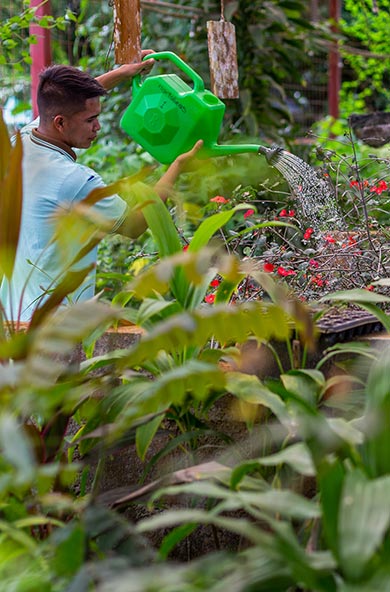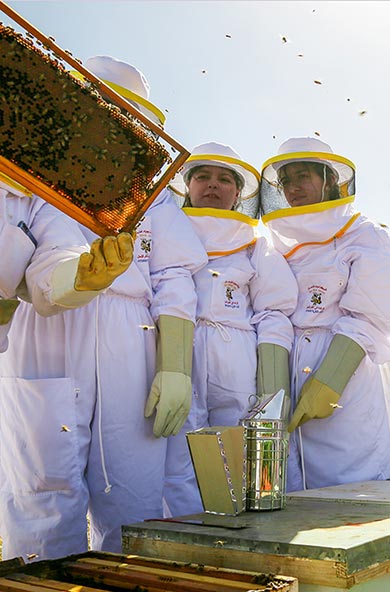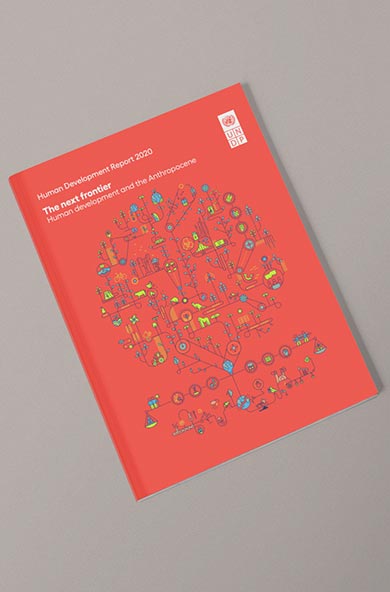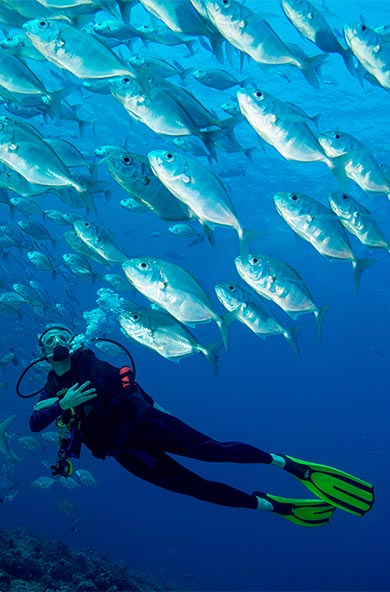Building early warning systems can alert people to the onset of natural disasters
Communities isolated by flooding have difficulty accessing clean water
By Grazela Maria Albino - Head of Solutions Mapping Timor-Leste Accelerator Lab
Dili looked sunny and brighter on the morning I drove around to see the impact of floods caused by the torrential rain that happened during Easter week. Some major roads that were flooded had already been cleaned from debris allowing me to travel to some of our most visited tourist destinations in Dili. Although it was distressing to see many tiny houses still flooded with water even though the rain had stopped, and some basic infrastructure destroyed, I was fascinated by the spirit of many Timorese who were out and about seeking their basic needs.
Figure 1. Passengers ready to cross the flooded Tasi-Tolu lagoon using fisherman boats. Photo by Grazela Albino
Mapping Community-led solutions in the capital city of Dili after flooding
I first visited Tasi Talu or, in English, the three lagoons. This latest flooding turned the three lagoons into one big lagoon with water levels continuing to rise causing new threats to the informal settlements surrounding Tasi Talu. A couple of fishermen decided to repurpose their boats to use them as passenger boats. As we don’t have this type of public transport to sail across the lagoons under normal circumstances, it was out of the ordinary to have a boat as a means of transportation. Fascinated to find this local solution provided under this time of difficulty, I decided to try the service and had a conversation with the boat-drivers. One of them said in Tetum (Timorese native language): “we must do this because we cannot catch fish these days as the sea water level is high, and besides we saw many people in Masin-Lidun village who cannot travel to markets or bring their children and families to hospitals because all roads were still flooded.” The fishermen also added that they have families to feed so repurposing their boats as passengers’ boats was a possible new source of income.
After visiting Tasi Tolu Lagoon, I also walked on our famous beach in Dili, the Area Branca at Metiaut Village. There I saw women and children collecting wood along the beach. On normal days people would be out walking, jogging and swimming but now there was so much wood, trunks and tree branches floating along the beach. I talked to a woman and her daughter who were collecting the wood and who lived by the beach. She said that there were so many ‘ai-teka mutin’ trunks floating on the water and they were not from the local surroundings. She said she would use the trunks as fuel for cooking and making fences for home gardens further inland. So, what looked like flood waste was actually a resource for this family.
Figure 2. Floating tree trunk and collected tree branches at Metiaut Village one week after flash flooding hit Dili. Photo by Grazela Albino
Another experience in Dili that caught my attention after this devastating flood was volunteerism by community members in Dili. Dircia, a youth and climate activist stated that her motivation was to support the most voiceless community as well as to feel the change in the environment because of the flooding. Another act of volunteerism came from the Philippine community in Timor-Leste who shared the concept of a community pantry or Bayanihan. According to the Vice-Chancellor of the Embassy of the Philippines in Dili, Mr. Laser Sumagaysay, “Community pantry is a community-led initiative inspired by the Filipino Bayanihan spirit. We aimed to share the idea of helping each other by inviting people to give what they can and take what they need for a day in a designated location. We hope the idea can then be shared and led by Timorese to spread the spirit of supporting others in need.”
Figure 3. Community Pantry in Bairo Farol, Dili. Photo by Vice Chancellor Mr. Laser Sumagaysay
Latest official figures (28 April) showed that a total of 31,337 households have been affected across all 13 municipalities, 83% of which is in Dili Municipality. While many who were displaced by the floods have returned to their communities, 3,925 people remain temporarily displaced in 25 evacuation facilities across Dili. Some may not be able to return to the areas where they were previously residing.
Challenges ahead amidst Covid-19
Significant among many challenges ahead amidst the Covid-19 pandemic is the poor housing system. As people build their houses using tin materials on mountainous areas and on riverbanks, vulnerability has increased. High concentration of people migrating from other municipalities seeking employment or studying at universities in Dili has led to new settlement areas in Dili. With unplanned urbanisation and no clear spatial planning on land use, more Timorese are likely to experience natural disasters in coming years putting them at high risk. The impact of this 2021 Easter floods is a strong reminder for Timor-Leste to reconsider the way housing development was done in previous years to achieve sustainable housing in Timor-Leste as highlighted by Pyone Myat Thu in her blog.
Re-imagining development in a sustainable way
Marrying efforts that support bottom-up solutions is critically important. While some of the current development programmes in Timor-Leste are focusing on building the capacity of local authorities, there is need to appreciate how the community in the field understands development and learn from those already addressing housing needs at their own cost. Take the Community Housing Units in the Municipality of Suai which was piloted by Community Housing Limited Unipessoal (CHL) in 2015. CHL designed and built the housing units to address the most vulnerable community in Suai. The housing units were designed using drainage system that stop flashed rainwater coming into the houses. The houses were also spaced adequately to allow the community to create gardens to grow their own food plants such as casava and corns. This example of building resilient housing system that is socially acceptable, environmentally friendly, and affordable could stimulate long lasting solutions.
Figure 4. Community Housing Limited Unipessoal. Using interlocking Soil Stabilised Brick called “Tijolu Kesi” to build 72 community houses in the Municipality of Suai. Photo by CHL
Building early warning systems can alert people to the onset of natural disasters. Timor-Leste can maximise the use of technology such as Artificial Intelligence (AI) to receive early warning on disaster risks and, more importantly, support the government and development agencies prioritise aid and mobilise resources to assist the most affected communities in need.

 Locations
Locations




















